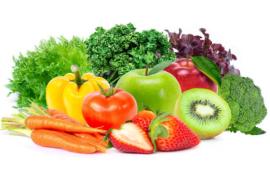Does your camp host children six and under or family camps with small children? If so, be on alert for egg allergies, which occur most in infants and young children. Learn here about this condition, egg replacements for baking, and egg ingredients to avoid.
Definition and Reactions
An egg allergy occurs when an immune system hypersensitivity mistakenly identifies egg proteins as dangerous. Egg allergies include IgE antibody-mediated allergy (generally known as type I food allergy) and other allergic conditions such as the itchy skin rash atopic dermatitis and eosinophilic esophagitis, which can cause chest or stomach pain, difficulty swallowing, reflux, and vomiting (American College of Allergy, Asthma, & Immunology [ACAAI], 2014). Of the most common food allergies, egg allergy sufferers are at the lowest possible risk of fatality, according to documentation of anaphylaxis fatalities in Australia, the United Kingdom, and the United States (Turner et al., 2017).
An IgE-mediated food allergy contains allergen-specific IgE antibodies and is responsible for most food-induced reactions. The five most prominent allergenic proteins from the domestic chicken (Gallus domesticus) egg have been designated in the immunology field as “Gal d 1-5.” Four of the allergenic egg proteins reside in egg whites, including:
- Ovomucoid (OVM)
- Ovalbumin
- Ovotransferrin
- Iysozyme
The fifth protein, alpha livetin, is within the egg yolk. OVM has been shown to be the dominant allergen in egg (Caubet & Wang, 2011).
Most people with egg allergies react to the egg whites, not the yolk. To be safe, those with an egg allergy should not consume either part, even if an egg yolk has been strained. Even if separated, the yolk is likely to retain some of the white’s proteins. (Food Allergy & Anaphylaxis Connection Team, 2021).
Statistics
Hen’s egg allergy is the second most prevalent food allergy in infants and children under five, following allergy to cow’s milk. Estimated presence of egg allergy is subject to the methods of data collection or definition, but according to a meta-analysis of food allergy prevalence, egg allergy affects an estimate of up to 2.5 percent of young children. The major limitation of this meta-analysis was significant discrepancies in study designs, making comparisons difficult and inconclusive.
Studies included in the meta-analysis were based largely upon the following methods to confirm the diagnosis of food allergy:
- Self-reports of food allergy, which tend to overestimate the prevalence
- Skin prick test studies and food-specific IgE levels to confirm sensitization to the allergen
- Double-blind, placebo-controlled food challenges, the most reliable standard (only three studies used this) (Caubet & Wang, 2011)
A national survey administered from October 2015 to September 2016 resulted in complete parent-proxy responses for 38,408 children. Survey results showed that egg allergy was 0.9 percent among all children under 18, and 1.3 percent among children under five years. Also, 23.4 percent of Black children were egg allergic, although that group comprised only 13.2 percent of the US pediatric population.
Another interesting survey result was that two-thirds of egg-allergic children can tolerate egg within baked goods; however, one-third cannot (Samady et al., 2020).
According to studies, approximately 70 percent of egg-allergic children will outgrow it by age 16, with most resolving the allergy by school age (ACAAI, 2019). Egg allergy rarely affects adults, but when it does become an adult-onset allergy, studies find that clinical symptoms were developing in childhood or young adulthood (Unsel et al., 2007).
Function of Eggs in Food
Eggs serve multiple purposes in cooking. They contribute to the structure, color, flavor, and consistency of cooked and baked goods in the following ways:
- Binding: Eggs mesh together ingredients, providing the food its form and preventing it from breaking down. Examples: bakery products, breadcrumb coatings, cookies, dumplings, ice cream, pasta, pastries, potato products, sauces, sausages, meatballs/loaf
- Leavening and Foam Formation: Eggs cause the expansion of batters and dough during heating by releasing gases and producing baked goods with a porous consistency. Leavening by eggs gives foods like souffles and meringue their light and airy texture and increased volume. Other examples: biscuits, cocktails, cotton candy, marshmallows.
- Moisture and emulsification: Egg liquids are absorbed into the other ingredients in a recipe, blending and adding moisture to the finished product. Examples: baby food, baking mixes, beverage powders, chocolates, cookies, dressings, instant drinks, mayonnaise, mousses, nougat, pastries, ready meals, remoulade, sauces, soups, specialty salads, spice pastes, spreads.
- Flavor and appearance: Eggs refine the flavor and accelerate a golden or golden-brown appearance of baked goods and other foods. Examples: bread, cake, pastries, rolls, sauces.
- Preserving: Eggs within certain food products can keep them from spoiling. Examples: some cheeses and beers.
- Clarification and fining agent: Clarification is the process of removing solids from a mixture to make it a clear liquid, and fining removes unwanted particles in wine by adding a substance that removes characteristics that cause it to look hazy. Examples: aspic, broth, fruit juice, liqueur, wine.
Eggs serve several purposes in baking. Baked goods without eggs could be flat, flavorless, or lack moisture. Fortuitously, there are numerous egg alternatives. Be wary of the term “egg substitute,” as these products are meant to help control cholesterol, not allergies, and contain egg. Following are some egg-free egg replacement products that can be used for baking (Gupta, 2014).
Egg Replacements for Baking:
- Applesauce
- Mashed banana
- Flaxseed meal, ground flaxseeds
- Chia seeds, whole or ground
- Commercial egg replacer
- Silken tofu
- Vinegar and baking soda
- Yogurt, buttermilk, or kefir
- Aquafaba
- Nut butter
- Carbonated water
- Agar-agar or gelatin
- Soy lecithin
- Pumpkin puree
- Pureed sweet potato
- Pureed prune
- Mashed avocado
- Water + vegetable oil + baking powder
- Mashed potatoes
- Lemon juice
- Milk (dairy and nondairy, condensed milk, or heavy cream)
- Nut/seed butter (peanut, almond, sunflower, etc.)
- Flour (chickpea, whole wheat, or all-purpose flour)
- Cornstarch, arrowroot flour, soy protein powder
(McDonell, 2017; Mattison, 2018; Madhuram’s Eggless Cooking, n.d.).
A note regarding egg in pasta: Dry packaged pasta is typically egg free but may be processed on equipment with egg residue from other products. Many commercially produced cooked pastas contain egg, including pasta within soups and other prepared foods. Read the label or ask about ingredients before purchasing and serving any pasta products to campers with an egg allergy. Look for ways to make fresh pasta egg-free.
Also, eggs are often used in the topping or foam of specialty coffee drinks and cocktails.
(Food Allergy Research & Education, 2021).
Ingredients to Avoid
The following ingredients contain/may contain eggs. Post these quick-reference lists in your camp kitchen.
Other Names for Egg
- Albumen/albumin (protein within egg white)
- Apovitellin
- Avidin (protein within egg white)
- Dried egg
- Egg oil
- Egg powder
- Egg protein
- Egg white
- E 322 lecithin
- E 1105 lysozyme
- Frozen eggs
- Globulin (protein within egg white)
- Liquid eggs
- Livetin
- Lysozyme (enzyme within egg white)
- Ovalbumin (protein within crystalline portion of egg white)
- Ovglycoprotein
- Ovoglobulin
- Ovomucin
- Ovomucoid
- Ovomuxiod
- Ovotransferrin
- Ovovitelia
- Ovovitellin (protein within egg yolk)
- Powdered egg
- Silici albuminate
- Trailblazer
- Vitellin
- Whole egg
- Yolk
Contains Eggs
- Any commercial product brushed with egg/egg whites for glazing, i.e., breads, pie crust, or jellybeans
- Baking mixtures (most)
- Baking powder with egg albumin
- Bavarian cream
- Beer battered fried foods
- Biscuits (American definition)
- Blancmange
- Boiled frosting
- Bread
- Breadcrumbs, breaded and batter-fried foods
- Caesar salad dressing
- Cakes
- Cake mixes
- Candies
- Chocolates
- Cholesterol-free egg substitute (e.g., Eggbeaters®)
- Clarified broth, bouillon or stock
- Commercially breaded meats or vegetables
- Cookies
- Cotton candy
- Cream pies, fillings, and puffs
- Crepes, waffles, and pancakes
- Croquettes
- Custard, frozen
- Custard pie
- Divinity
- Doughnuts
- Dumplings
- Egg bagels
- Egg drop soup
- Eggnog
- Egg noodles
- Egg substitute
- Egg wash
- Fat-free products with egg-based substitutes
- Flavoproteins
- French toast
- Fried rice containing eggs
- Fritters/frittatas
- Frosting or icing
- Frozen yogurt
- Fruit whips
- Fondant
- Fudge
- Hollandaise sauce
- Ice cream
- Instant drinks
- Macaroni
- Macaroons
- Malted drinks
- Malted milk powders
- Marshmallows
- Marzipan
- Mayonnaise
- Meringue, meringue mix or powder
- Miracle Whip®
- Mousses
- Muffins
- Nougat (freshly made)
- Omelets
- Pasta
- Pastries
- Piave (an Italian cheese)
- Pie shells, commercially baked
- Pretzels
- Protein beverage powders
- Puddings
- Pumpkin pie
- Quiche
- Ready meals
- Remoulade
- Simplesse® (fat substitute)
- Spice pastes
- Souffles
- Turtle soup or mock turtle soup
- Zweiback
(St. Joseph’s Healthcare, CA, 2011; Stanford Children’s Health, 2021; Indorato, D.A., 2014.)
May Contain Eggs (check ingredient list)
- Aioli
- Artificial flavoring
- Aspic (jelly/gelatin-type substance made from meat stock)
- Baby foods containing broth
- Binder
- Bouillon/broth (egg shells/whites may be used as clarifying agent)
- Cocktail drinks
- Coffee drinks like cappuccino (eggs
- are sometimes used to help create the foam)
- Cheese
- Dessert powders (i.e., cheesecake mix, mousse mix, etc.)
- Eggrolls (not typically egg-based, but may have egg in the dough)
- Fat substitutes
- Fruit juice
- Hamburgers (for binding)
- Lecithin
- Liqueurs
- Lollipops and other candies
- Meatloaf and meatballs
- Natural flavorings
- Nougat in commercial candy bars
- Potatoes: mashed, Au Gratin, scalloped
- Protein drinks
- Pudding
- Root beer
- Salad dressings
- Sauces
- Sausages
- Sherbet/Sorbet
- Soda crackers
- Soups and consommé (egg shells/whites may be used as clarifying agent)
- Specialty salads
- Spice pastes
- Spreads
- Stuffing
- Sushi
- Tartar sauce
- Tortillas
- Vegetarian meat substitutes
- Wine (egg whites may be used in the process of making wine)
Remember, always check ingredient lists for camper safety.
Kimberly Whiteside Truitt is former food service manager at Camp Gilmont and Camp Zephyr and has served on Camping Magazine’s Editorial Advisory Committee. Kimberly was a presenter at the 2018 and 2020 North American Food Service and Maintenance Conferences.
References
- American College of Allergy, Asthma, & Immunology. (March 21, 2019). Egg allergy. Retrieved from acaai.org/allergies/types-allergies/food-allergy/types-food-allergy/egg-allergy
- American College of Allergy, Asthma, & Immunology. (2014). Eosinophilic Esophagitis Retrieved from acaai.org/allergies/types/food-allergies/types-food-allergy/eosinophilic-esophagitis
- Caubet, J. C., & Wang, J. (2011, April 1). Current understanding of egg allergy. Retrieved from ncbi.nlm.nih.gov/pmc/articles/PMC3069662/#:~:text=The%20estimated%20prevalence%20of%20egg,of%20young%20children%20%5B6%5D
- Food Allergy & Anaphylaxis Connection Team. (2021). Food Allergy and Anaphylaxis. Retrieved from foodallergyawareness.org/food-allergy-and-anaphylaxis/food-allergens/egg/
- Food Allergy Research & Education. (2021). Food allergy 101: Manage egg allergy | egg allergy symptoms. FARE. Retrieved from foodallergy.org/living-food-allergies/food-allergy-essentials/common-allergens/egg
- Indorato, D.A. (2014.) Egg allergy avoidance list: hidden names for egg. Retrieved from kidswithfoodallergies.org/egg-allergy.aspx
- Madhuram’s Eggless Cooking. (n.d.). Top 12 best proven egg substitutes in baking/cooking recipes. Retrieved from egglesscooking.com/egg-substitutes
- Mattison, L. (2017, March 7). Eight surprising egg substitutes (and when to use them). Retrieved from tasteofhome.com/article/surprising-egg-substitutes/
- McDonnell, K. (2017, May 2). Thirteen effective substitutes for eggs. Retrieved from healthline.com/nutrition/egg-substitutes#TOC_TITLE_HDR_16
- r-Biopharm. (2019, October 14). Foods to avoid if you have an egg allergy. Retrieved from food.r-biopharm.com/news/foods-to-avoid-if-you-have-an-egg-allergy/
- Samady, W., Warren, C., Wang, J., Das, R., & Gupta, R. S. (2020, May 4). Egg allergy in US children. Retrieved from pubmed.ncbi.nlm.nih.gov/32376485/
- St. Joseph’s Healthcare. (2011). Egg allergy. Retrieved from stjoes.ca/patients-visitors/patient-education/a-e/PD%204790%20Egg%20Allergy%20FIRH.pdf
- Stanford Children’s Health. (2021). Egg allergy diet for children. Retrieved from stanfordchildrens.org/en/topic/default?id=egg-allergy-diet-for-children-90-P01684
- Turner, P. J., Jerschow, E., Umasunthar, T., Lin, R., Campbell, D. E., & Boyle, R. J. (2017, October). Fatal anaphylaxis: Mortality rate and risk factors. Retrieved from ncbi.nlm.nih.gov/pmc/articles/PMC5589409/
- Unsel, M., Sin, A. Z., Ardeniz, O., Erdem, N., Ersoy, R., Gulbahar, O., Mete, N., & Kokuludag, A. (2007). New onset egg allergy in an adult. Retrieved from academia.edu/15269948/New_onset_egg_allergy_in_an_adult




